
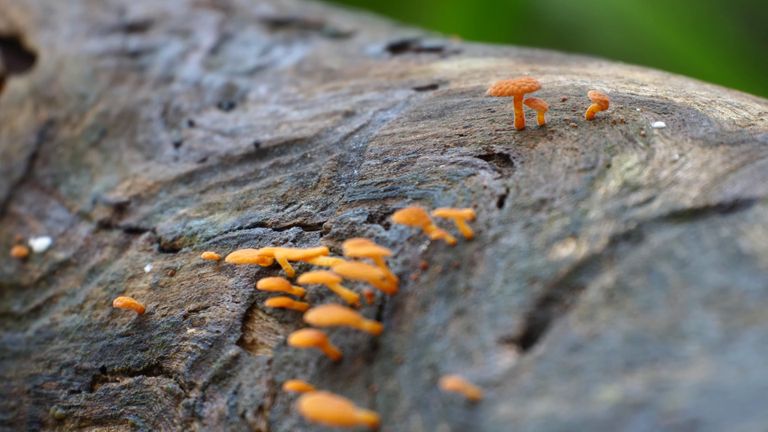
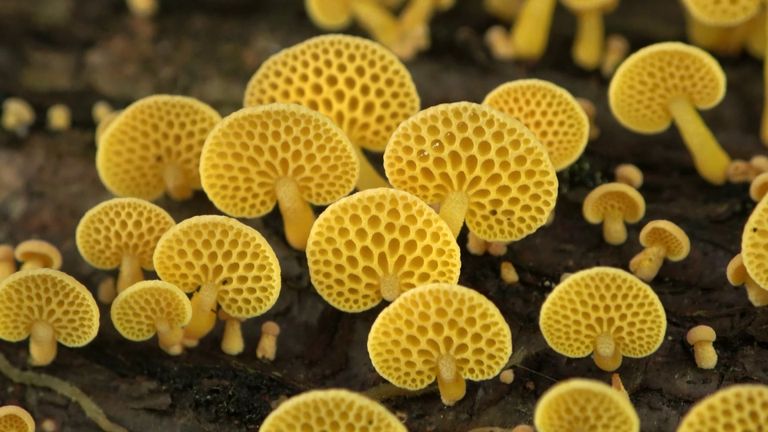
A true traveler
Prawdziwy podróżnik
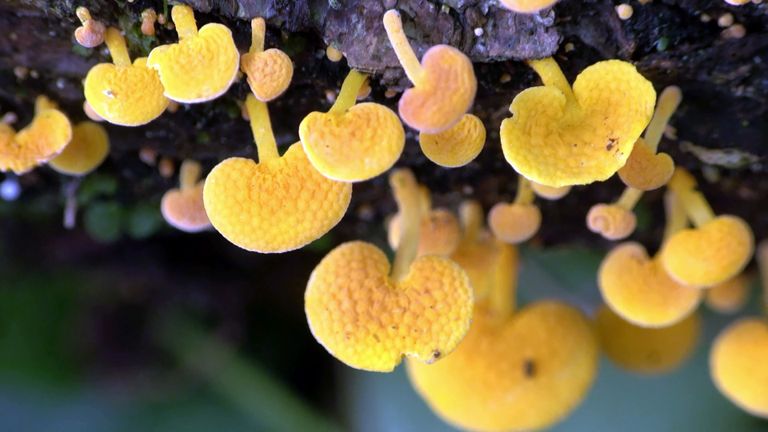
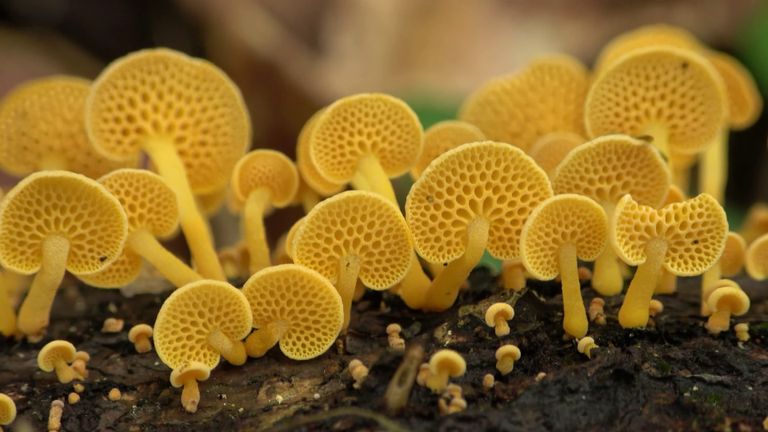
This species of mushroom can indeed be called a traveler. His home is the island of Madagascar, but at the moment he can be found in many places around the world. In the first place, it went to Australia and New Zealand, thanks to the transports of wood on which it grows, because it is an arboreal species. Currently, it is found in many places in the world, including Asia, Africa and even Europe.
Ten gatunek grzyba rzeczywiście można nazwać podróżnikiem. Jego domem jest wyspa Madagaskar, jednak można go w tej chwili spotkać w wielu miejscach na świecie. W pierwszej kolejności zawędrował do Australii i Nowej Zelandii, a to za sprawą transportów drewna na którym rośnie, bo to gatunek nadrzewny. Obecnie jest już spotykany w wielu miejscach na Świecie między innymi w Azji, Afryce a nawet w Europie.
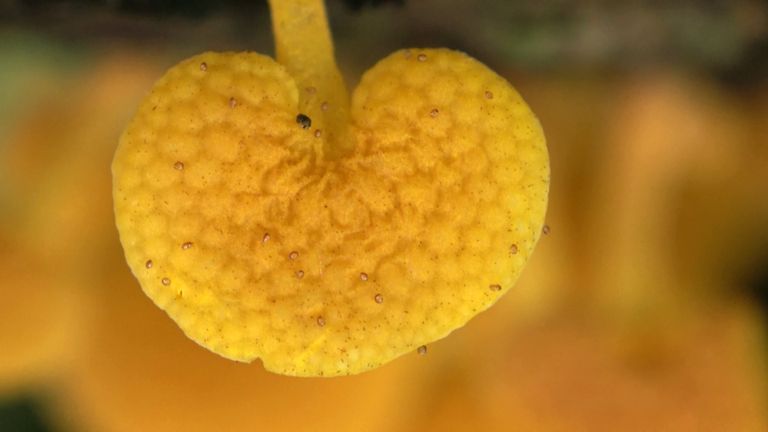
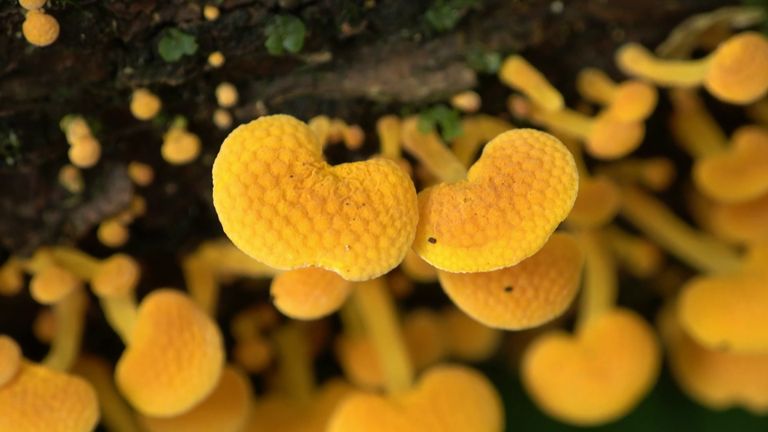
In Europe, for example in the British Isles or Ireland, its appearance is an evident signal of a warming climate, this fungus has specific thermal requirements to appear.
W Europie na przykład na Wyspach Brytyjskich czy w Irlandii jego pojawienie się to ewidentny sygnał ocieplającego się klimatu, grzyb ten ma określone wymogi termiczne aby się pojawiać.
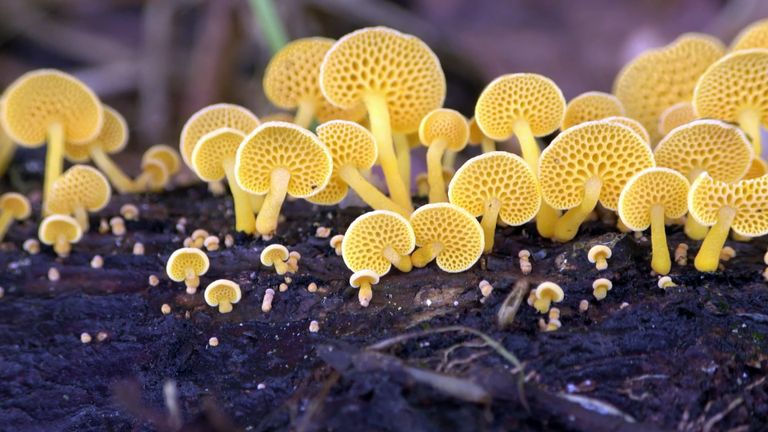
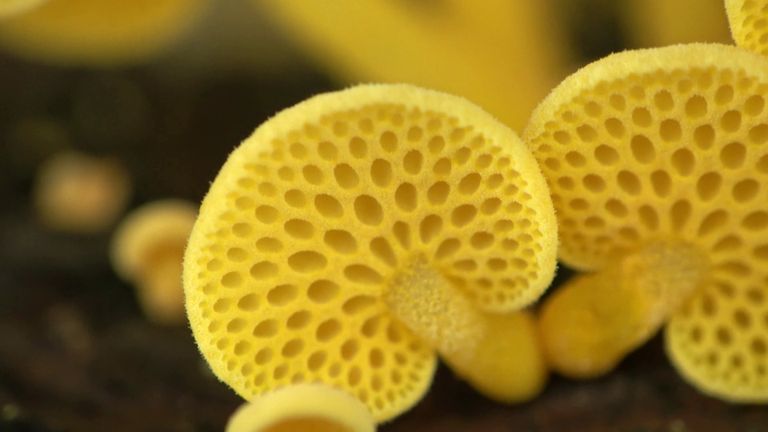
Like most arboreal mushrooms, it usually has a kidney-shaped, semicircular, fan-shaped cap. It can reach up to 20 mm in diameter. It is mounted on a leg located laterally. Its shape resembles a miniature table tennis racket.
Jak większość grzybów nadrzewnych posiada zazwyczaj nerkowaty, półokrągły, wachlarzowaty kapelusz. Może osiągnąć do 20 mm średnicy. Osadzony jest na nóżce ulokowanej bocznie. Kształtem przypomina miniaturową paletkę do tenisa stołowego.
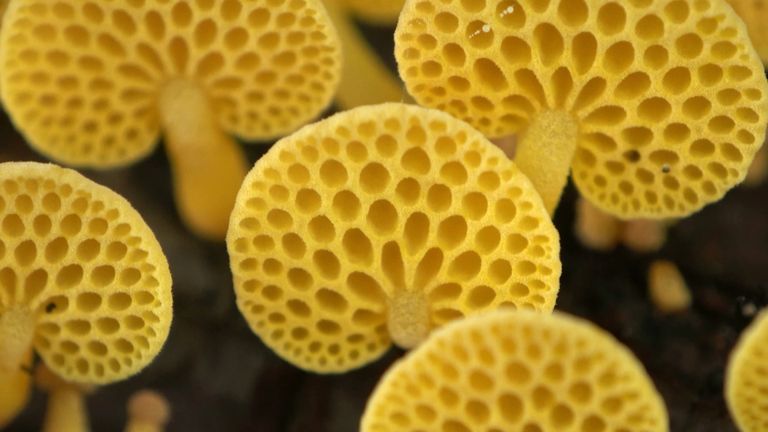
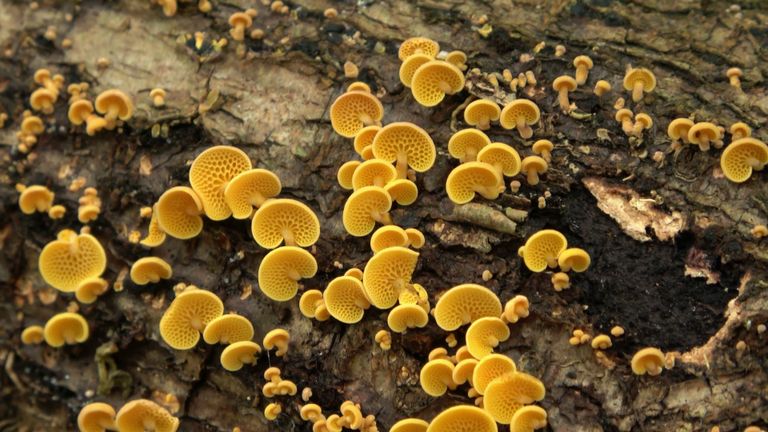
The hat of a young fruiting body has a smooth surface. It becomes nodular over time, corresponding to a goblet-like hymenophore pattern. The color of the hat is dark yellow, light orange.
Kapelusz u młodego owocnika ma gładką powierzchnię. Z czasem staje się guzkowata odpowiadająca wzorem kubkowatemu hymenoforowi. Kolor kapelusza jest ciemnożółty, jasno-pomarańczowy.
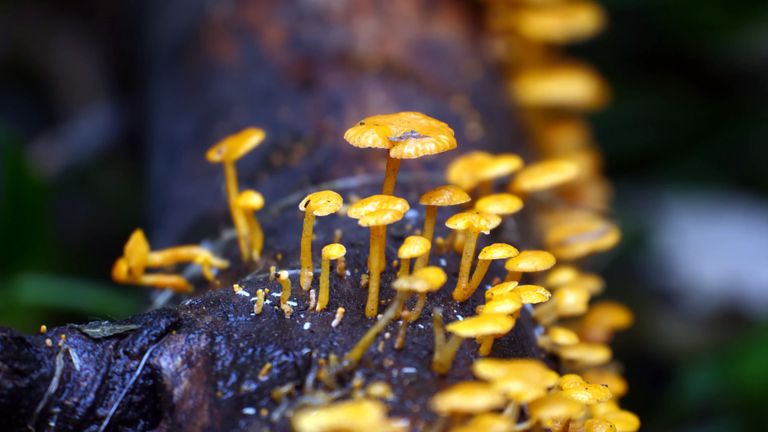
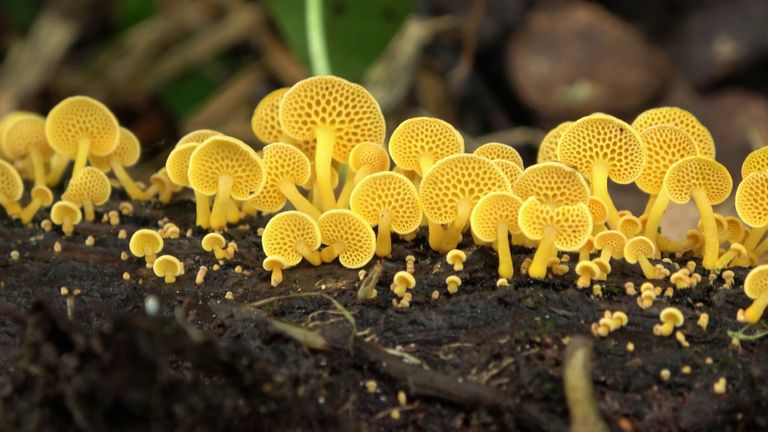
The flesh of the mushroom is delicate, thin, has no perceptible taste or smell. The specific epithet "calocera" comes from Greek and means "beautiful and waxy". The fungus has no culinary uses, and has not yet been tested for possible toxicity.
Miąższ grzyba jest delikatny, cienki, nie posiada wyczuwalnego smaku ani zapachu. Specyficzny epitet "calocera" pochodzi z greki i oznacza „piękny i woskowy”. Grzyb nie ma zastosowań kulinarnych, i nie został do tej pory zbadany pod względem ewentualnej toksyczności.
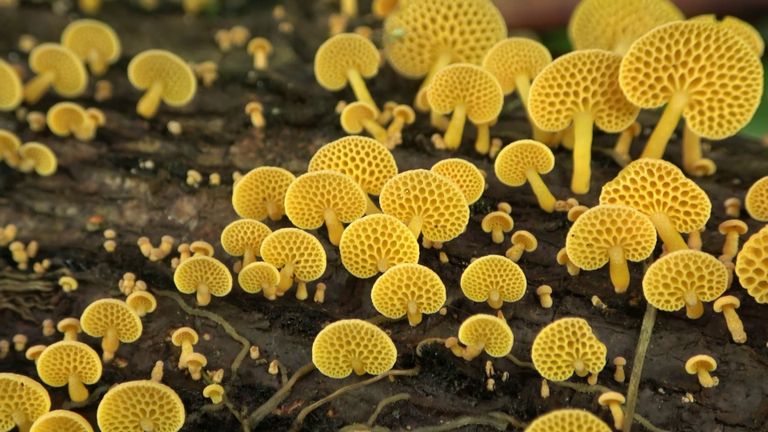
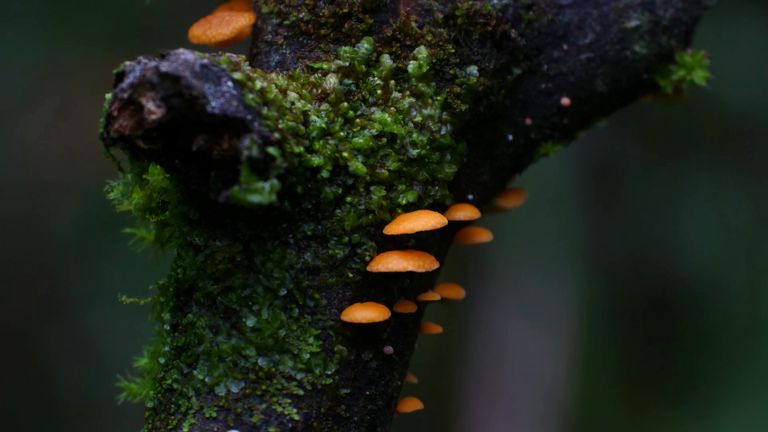
The most interesting is the Hymenophore
Najciekawszy jest Hymenofor
It is this part of the mushroom that, thanks to its unusual structure, attracts attention and makes it beautiful. It resembles the shape of honeycombs. Its shape is cup-shaped, ellipsoidal. The color is the same as the color of the hat.
To właśnie ta część grzyba, dzięki niezwykłej budowie przyciąga uwagę i stanowi o jego pięknie. Przypomina on bowiem kształtem plastry miodu. Jego kształt jest kubkowaty, elipsoidalny. Kolor natomiast jest identyczny z kolorem kapelusza.

The leg is relatively short, it can reach 15 mm in length, and it is attached to the cap laterally. It has a cylindrical shape and a color similar to the entire mushroom. It does not have a ring.
Nóżka jest stosunkowo krótka, może osiągnąć do 15 mm długości i jest przyrośnięta do kapelusza bocznie. Ma cylindryczny kształt i kolor podobny do całego grzyba. Nie posiada pierścienia.
The fungus is found in moist and warm deciduous and mixed forests. It grows on fallen branches of maple, beech and elderberry. In European conditions, it appears in summer, most often in July, and grows until late autumn. It is very rare.
Grzyb występuje w wilgotnych i ciepłych lasach liściastych i mieszanych. Wyrasta na opadłych gałęziach klonu, buka, czarnego bzu. W warunkach europejskich pojawia się latem, najczęściej w lipcu i rośnie do późnej jesieni. Jest bardzo rzadki.

Enjoy 😉

Its masterpiece